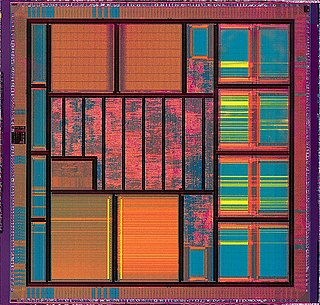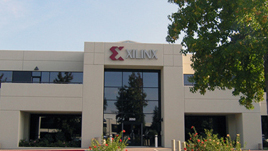Azuro, Inc. is an electronic design automation (EDA) software company. Formerly headquartered in Santa Clara, California with a development office in Cambridge, England, it is now part of Cadence Design Systems.
Electronic design automation (EDA), also referred to as electronic computer-aided design (ECAD), is a category of software tools for designing electronic systems such as integrated circuits and printed circuit boards. The tools work together in a design flow that chip designers use to design and analyze entire semiconductor chips. Since a modern semiconductor chip can have billions of components, EDA tools are essential for their design.
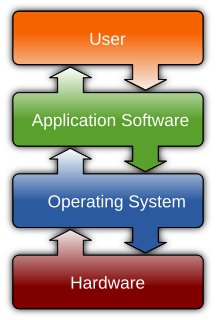
Computer software, or simply software, is a collection of data or computer instructions that tell the computer how to work. This is in contrast to physical hardware, from which the system is built and actually performs the work. In computer science and software engineering, computer software is all information processed by computer systems, programs and data. Computer software includes computer programs, libraries and related non-executable data, such as online documentation or digital media. Computer hardware and software require each other and neither can be realistically used on its own.
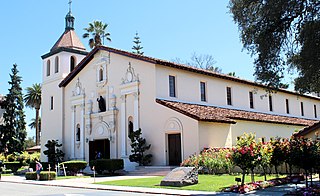
Santa Clara is a city in Santa Clara County, California. The city's population was 116,468 as of the 2010 United States Census, making it the ninth-most populous city in the San Francisco Bay Area. Located on the southern coast of San Francisco Bay immediately west of San Jose and 45 miles (72 km) southeast of San Francisco, the city was founded in 1777 with the establishment of Mission Santa Clara de Asís, the eighth of 21 California missions. The city was later incorporated in 1852. The mission, the city, and the county are all named for Saint Clare of Assisi.
Contents
Azuro develops software for the design of integrated circuits. Azuro specializes in clock network implementation. Azuro's PowerCentric product takes an innovative approach to clock network implementation that produces lower power clock networks with lower clock skew and shorter insertion delay using a smaller area of the integrated circuit than competing tools.

An integrated circuit or monolithic integrated circuit is a set of electronic circuits on one small flat piece of semiconductor material that is normally silicon. The integration of large numbers of tiny transistors into a small chip results in circuits that are orders of magnitude smaller, faster, and less expensive than those constructed of discrete electronic components. The IC's mass production capability, reliability, and building-block approach to circuit design has ensured the rapid adoption of standardized ICs in place of designs using discrete transistors. ICs are now used in virtually all electronic equipment and have revolutionized the world of electronics. Computers, mobile phones, and other digital home appliances are now inextricable parts of the structure of modern societies, made possible by the small size and low cost of ICs.
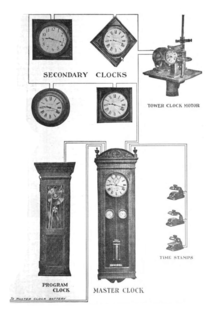
A clock network or clock system is a set of synchronized clocks designed to always show exactly the same time by communicating with each other. Clock networks usually consist of a central master clock kept in sync with an official time source, and one or more slave clocks which receive and display the time from the master.
Clock skew is a phenomenon in synchronous digital circuit systems in which the same sourced clock signal arrives at different components at different times i.e. the instantaneous difference between the readings of any two clocks is called their skew.
Azuro has been particularly focussed on lower power design. In synchronous circuit designs all changes of state are coordinated by a clock, and this clock edge must be distributed to all parts of the chip. Since the clock signal is distributed throughout the entire circuit it can consume a large percentage of the energy used. Azuro's technology allows clock gating and clock network implementation to be combined as a single step, allowing the clock to be prevented from reaching parts of the chip where it is not needed more effectively than competing technologies. The company has a number of patents in the area of low power design, clock tree synthesis and power analysis.
A synchronous circuit is a digital circuit in which the changes in the state of memory elements are synchronized by a clock signal. In a sequential digital logic circuit, data is stored in memory devices called flip-flops or latches. The output of a flip-flop is constant until a pulse is applied to its "clock" input, upon which the input of the flip-flop is latched into its output. In a synchronous logic circuit, an electronic oscillator called the clock generates a string of pulses, the "clock signal". This clock signal is applied to every storage element, so in an ideal synchronous circuit, every change in the logical levels of its storage components is simultaneous. Ideally, the input to each storage element has reached its final value before the next clock occurs, so the behaviour of the whole circuit can be predicted exactly. Practically, some delay is required for each logical operation, resulting in a maximum speed at which each synchronous system can run.
In information technology and computer science, a program is described as stateful if it is designed to remember preceding events or user interactions; the remembered information is called the state of the system.
In electronics and especially synchronous digital circuits, a clock signal is a particular type of signal that oscillates between a high and a low state and is used like a metronome to coordinate actions of digital circuits.



